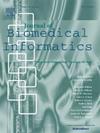KGiA: Drug repurposing through disease-aware knowledge graph augmentation
IF 4.5
2区 医学
Q2 COMPUTER SCIENCE, INTERDISCIPLINARY APPLICATIONS
引用次数: 0
Abstract
Objective:
Drug repurposing offers a cost-effective strategy to accelerate drug development by identifying new therapeutic uses for approved medications. Knowledge graphs (KGs) that capture large amounts of biomedical knowledge have recently been used for drug repurposing, however, KGs are inherently incomplete due to our limited biomedical knowledge.
Methods:
We propose KGiA, an inductive graph augmentation method that supports semi-inductive reasoning—allowing models to generalize to previously unseen biomedical entities. KGiA enhances KGs using counterfactual relationships mined from disease-specific topological patterns. We apply it to a state-of-art biomedical KG constructed from six datasets including biomedical relationships extracted from biomedical literature, which comprised 1,614,801 triples and 100,563 entities, including 30,006 diseases.
Results:
Across five augmented architectures, KGiA improves generalizability by up to 24× in Mean Reciprocal Rank (MRR) and outperforms the state-of-the-art KG-based drug repurposing model by up to 32%. We applied KGiA in four case studies of diseases including Alzheimer’s Disease and showed its promise in identifying novel repurposed candidate drugs.
Conclusion:
We showed that leveraging counterfactual relationships derived from disease-specific graph structures to augment existing knowledge graphs improved performance in KG-based drug repurposing.

KGiA:通过疾病感知知识图谱增强实现药物再利用
目的:药物再利用提供了一种具有成本效益的策略,通过确定已批准药物的新治疗用途来加速药物开发。获取大量生物医学知识的知识图谱(KGs)最近被用于药物再利用,然而,由于我们有限的生物医学知识,KGs本质上是不完整的。方法:我们提出了KGiA,一种支持半归纳推理的归纳图增强方法,允许模型推广到以前未见过的生物医学实体。KGiA使用从疾病特定拓扑模式中挖掘的反事实关系来增强KGs。我们将其应用于由六个数据集构建的最先进的生物医学KG,这些数据集包括从生物医学文献中提取的生物医学关系,其中包括1,614,801个三组和100,563个实体,包括30,000种疾病。结果:在五个增强的体系结构中,KGiA的平均互反秩(MRR)提高了24倍的通用性,并且比最先进的基于kg的药物再利用模型高出32%。我们将KGiA应用于包括阿尔茨海默病在内的四个疾病案例研究中,并显示了它在识别新的重新用途候选药物方面的前景。结论:我们表明,利用来自疾病特异性图结构的反事实关系来增强现有的知识图,可以提高基于kg的药物再利用的性能。
本文章由计算机程序翻译,如有差异,请以英文原文为准。
求助全文
约1分钟内获得全文
求助全文
来源期刊

Journal of Biomedical Informatics
医学-计算机:跨学科应用
CiteScore
8.90
自引率
6.70%
发文量
243
审稿时长
32 days
期刊介绍:
The Journal of Biomedical Informatics reflects a commitment to high-quality original research papers, reviews, and commentaries in the area of biomedical informatics methodology. Although we publish articles motivated by applications in the biomedical sciences (for example, clinical medicine, health care, population health, and translational bioinformatics), the journal emphasizes reports of new methodologies and techniques that have general applicability and that form the basis for the evolving science of biomedical informatics. Articles on medical devices; evaluations of implemented systems (including clinical trials of information technologies); or papers that provide insight into a biological process, a specific disease, or treatment options would generally be more suitable for publication in other venues. Papers on applications of signal processing and image analysis are often more suitable for biomedical engineering journals or other informatics journals, although we do publish papers that emphasize the information management and knowledge representation/modeling issues that arise in the storage and use of biological signals and images. System descriptions are welcome if they illustrate and substantiate the underlying methodology that is the principal focus of the report and an effort is made to address the generalizability and/or range of application of that methodology. Note also that, given the international nature of JBI, papers that deal with specific languages other than English, or with country-specific health systems or approaches, are acceptable for JBI only if they offer generalizable lessons that are relevant to the broad JBI readership, regardless of their country, language, culture, or health system.
 求助内容:
求助内容: 应助结果提醒方式:
应助结果提醒方式:


